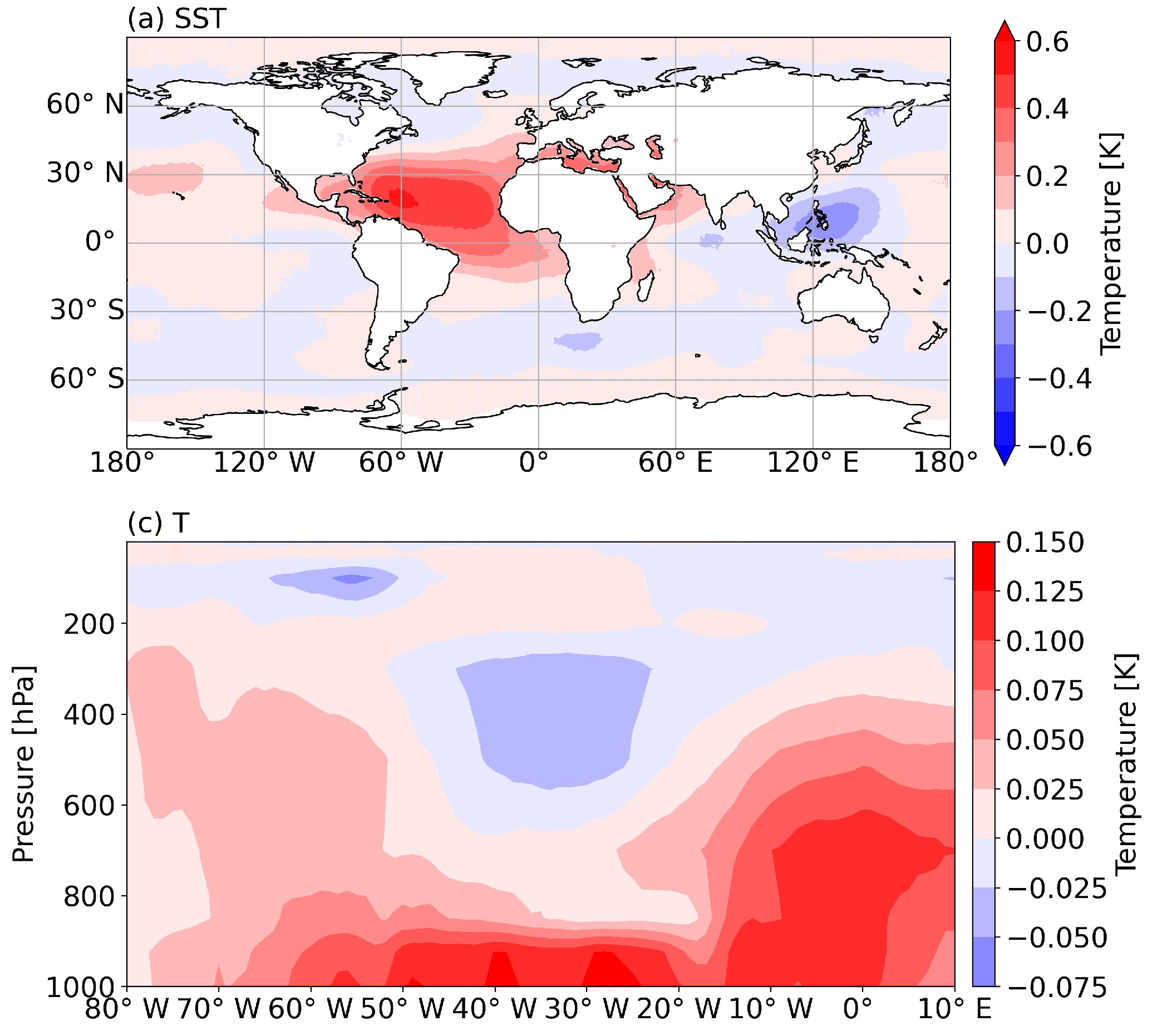Aerosol-weather interaction
Understanding aerosol effects on weather forecasts

Godzilla dust storm during June 2020 (S-NPP VIIRS true color)
Numerical experiments were conducted to understand the impact of aerosol-radiation-cloud interaction on medium-range weather forecasts as well as to characterize the impact of aerosol transmittance effects on satellite infrared radiance data assimilation.
Aerosol-aware radiance data assimilation
Wei et al (2021) found that resolving the aerosol transmittance effects reduces simulated brightness temperature (BT) in thermal window channels (8 to 13 µm) by up to 4 K over dust-dominant regions. The cooler simulated BTs result in more positive first-guess departures and alter the QC checks. As a result, assimilating aerosol-affected BTs produces a warmer analyzed lower atmosphere and sea surface temperature which have better agreement with measurements over the trans-Atlantic region.
Aerosol-radiation-cloud feedback
We use Unified Forecast System (UFS) to investigate the impact of aerosol-radiation-cloud interaction on medium-range weather forecasts. A Harvey hurricane case study showed that more realistic treatment of aerosols, and their effects, enhanced the storm intensity and improved storm track forecats. Work is ongoing to investigate the aerosol feedback associated with episodic dust & smoke outbreak and their impact on weather forecasts.
